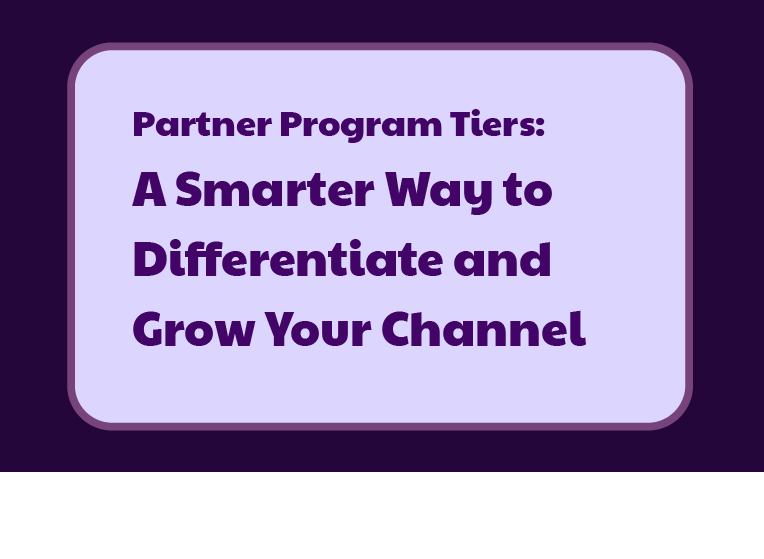PRM vs. CRM - What's the Difference?
PRM, or partner relationship management, and CRM, or customer relationship management, are common software tools used for managing a business. We're here to break down the difference.

Table of Contents 📋
Table of Contents 📋
Today, there are many software tools designed to manage various aspects of a business.
One of the most commonly encountered business software is a CRM.
What is CRM?
CRM, which stands for customer relationship management is a type of software that is widely known and used by many companies. It can be more specifically defined as a database of a company's customers – one that maintains up-to-date information, such as their latest interactions with the company, and provides unified visibility of such data for a CRM's multiple users.
What is PRM?
PRM, or partner relationship management, is another type of software used by companies with partner programs, which are established for facilitating the execution of their channel sales. They would use a PRM to manage all the data they have on their channel partners (i.e. data on sales activities being carried out by those partners) as well as for training and certifications for those partners, enabling partners with information, providing support to partners and more.
How are PRM and CRM different?
Both are common software tools used to assist in managing a business and with such close abbreviations, many people are unsure of how the two differ.
In a nutshell:
- Customer Relationship Management, CRM, is for managing the data you have on your customers
- Partner Relationship Management, PRM, is mainly for managing your activities with partners (channel sales partners)
But, we’re here to break it down for you even further:

The main difference between PRM and CRM technology is their functionality. They are two different types of software not intended to be used for the same purpose. CRM is concerned with a company’s relationships with their customers while PRM is concerned with managing a company’s relationship with their indirect sales teams aka their channel sales partners and the sales efforts those partners produce for the vendor (aka company).
Is PRM similar to CRM?
Similar but it has a different purpose. A PRM system enables vendors to exchange information and transact with their partners. Although they are definitely not the same thing, you could say that a PRM is a specialized version of CRM – focused on channel sales optimization. PRM software is built for vendors to assist channel partners in progressing towards making a sale, with several tools at their disposal to unify, streamline and facilitate the whole process. Tools for onboarding partners, training partners, sharing leads with them, registering deals, motivating them to be more engaged, tracking progress and much more.
“Sales-focused partner relationship management (PRM) applications are designed to improve an enterprise’s ability to market, sell and service end customers through channel partners. This category includes many of the traditional elements contained in a direct sales solution (opportunity management), but the solutions are configured for supporting a partner-driven environment. These applications consolidate data and transactions; set business rules and track activity; are typically used to manage channel partners, distributors, alliance or strategic partnerships; and often include a portal to enable bidirectional information flow and communications between partners.” - Gartner
Is PRM related to CRM? While they're not the same thing – they are still connected.
PRM applications have been integrated with CRM solutions to eliminate data silos and extend the functionality by introducing an integrated data source of record. Pulling CRM data into a PRM allows integrated processes between a vendor's partners and channel partner management team to benefit from a centralized database.
This is actually the primary function of a PRM aka partner portal: to give your channel partners a place where they can register deals, manage those deals alongside your partner team and give them visibility into your CRM deal data (only the data that is relevant to each partner).
In order for the PRM to provide that segmented data visibility to your partners, the PRM needs to first retrieve the data from your CRM.
How is a PRM literally connected to a CRM?
All PRM vendors connect to CRMs via an integration built into the PRM. If you get a PRM, you would have to give it access to your CRM so that it can display your (relevant) CRM information into your partner portal for your partners to see and update.
If you're in the market to purchase a partner portal (PRM software), it's very important to your channel operations' success that you run an assessment of how the PRM vendor has built their CRM integration.
↳ There are various approaches to achieving the integration and the most common method (field-mapping) will slow you down by months and accumulate in a lot of wasted hours spent troubleshooting errors caused by the integration.
Meanwhile, there are other integration methods (called data mirroring) that prevent all those pains and don't create any extra work for you (e.g. this is how Magentrix PRM does it).
Check out our CRM-to-PRM Integration Guide for the Unsuspecting Partner Portal (PRM) Buyer for further reading to learn how different PRMs handle this.
Summary: A PRM doesn’t replace your CRM – it works alongside it. And the value of a partner portal comes from how it connects back to your CRM so partners can register deals, update records, and see the same data your sales team does. That connection is called CRM-to-PRM integration, and it’s one of the biggest factors that determines whether a portal succeeds or fails.
Maximize your channel sales efficiency with a PRM
Want to know more about PRM? Check out this great article, The Ultimate Guide to Partner Relationship Management (PRM), or simply ask us!



